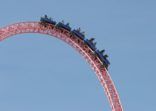“We trimmed exposure to India and Korea as we were concerned after the run-up [in markets]. We had different instances when target prices on stocks were reached,” said Csellak in an interview with Fund Selector Asia.
Volatile Korea
Korea with a 20.7% weighting and India (17%) were still the top country allocations of the Manulife Asian Small Cap Equity Fund, according to the fact sheet on 31 March.
In Korea, exposure was pared in a few highly-valued cosmetics and healthcare stocks, she said, but did not provide details.
Celltrion Healthcare (1.5% weighting), a Korea-based biotechnology firm, features in the top 10 holdings of the fund.
Korea’s equity markets are volatile with stocks not necessarily reacting to company news or fundamentals, and at times breaching their daily price limits, Csellak said.
“In Korea, local investment trust companies and retail investors have been driving the market. Any day, some stocks are limit up and limit down. You look for [company] news on Bloomberg and there is no news. It is a volatile market.”
Daily price limit is an upper and a lower bound to which the price of each security can move on a certain day. Current price limit in the Kospi market is 15% for stocks, as per information on the exchange’s web site.
Korea will raise this limit to 30% from next month, according to a Bloomberg News report.
Csellak finds innovative business models in Korea as well as Taiwan, which has a 13.7% weighting in the portfolio.
Between the two, she prefers Taiwan companies because they often have a desirable dividend yield of 5-6%. Moreover, the Taiwan stock market has not been as volatile as Korea, she added.
Korean equities, however, could receive a boost. The central bank is under increasing pressure to cut interest rates and that would benefit the market, FSA reported earlier.
India reforms hyped
Csellak voiced concerns over “hype” of the reform process in India and its actual implementation.
“I do not want to invest because of reforms. I want to invest because of earnings.
“Late last year we had conversation with some Indian companies that we currently hold [in the portfolio]. These companies still have not seen a rebound in consumption in Mumbai and Delhi. We like them, [but] we were little concerned,” she said.
Cox & Kings (a travel company), Strides Acrolab (a pharmaceutical company), KRBL (a rice exporter) and Eros International (a producer and distributor of Indian films) feature in the top 10 holdings.
“We went overweight this market in 2013 and our stocks are still trading at 10 times or 12 times [price-to-earning multiple].”
Despite profit booking in few stocks, India remains the best structural story for the next several years, she said.
“I am more of a long-term believer in India than I am in China at this time.”
Hong Kong preferred over China
She still finds relative valuation-based opportunities in Hong Kong compared to China.
China’s stock markets received a boost after the launch of the Shanghai-Hong Kong Stock Connect in November and a series of monetary easing measures by the government. However, the high capital flows has come with increasing volatility.
The bullish sentiment and onshore liquidity then started to spill over into the Hong Kong market from early April after China allowed domestic mutual funds to access the Stock Connect and investors started noticing the discount of H-shares versus A-shares.
Csellak pointed out that volatility has also been increasing in the Shenzhen market due to investor expectations for the Hong Kong-Shenzhen Connect, which is likely to launch this year.
Share prices of Shenzhen companies have risen and as a result Hong Kong companies are looking attractive, she said.
“In Hong Kong and China, stocks have moved up. But there are number of stocks in Hong Kong that still have value.”
Hong Kong and China respectively have 7.4% and 14.5% allocation in the fund.
A look at the three-year performance of the Manulife Asian Small Cap Equity Fund against its benchmark index:

















